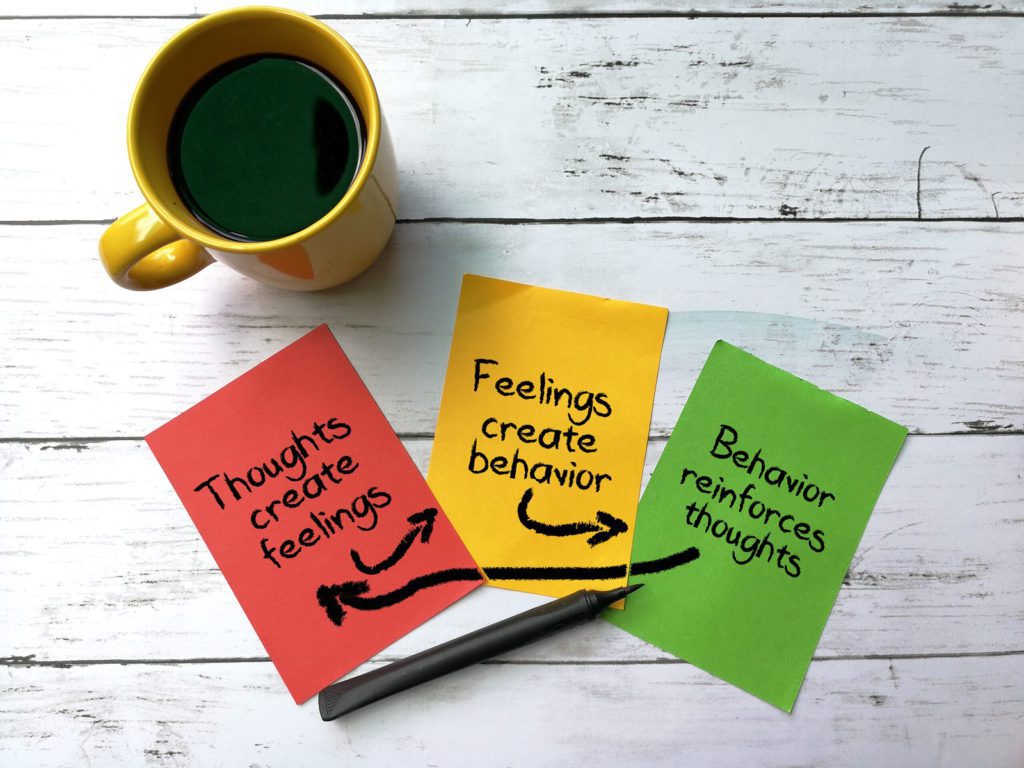A 5-Minute Guide to Cognitive Behavioral Therapy

Patients, therapists, and insurance companies often prefer cognitive behavioral therapy (CBT). It’s quicker than most other forms of psychological treatment, and a growing body of research shows that it works.
One of the main benefits of CBT is that it trains you to be your own therapist.You learn to change your thinking and develop more effective ways of coping.
In your sessions, you’ll identify distorted thought patterns and replace them with more realistic ones. As your thinking changes, your feelings become more manageable, and your actions become more constructive.
See how working with a therapist or trying CBT on your own could help you to lead a happier and more successful life. Study this quick guide to cognitive behavioral therapy.
Benefits of CBT:
1. Treat depression and anxiety. CBT can be used to treat many mental disorders. That includes some of the most common conditions like depression, anxiety, bipolar disorders, and PTSD.
2. Overcome addictions. Many recovering addicts rely on CBT to prevent relapses. Therapy can help build self-esteem and support healthier lifestyles.
3. Sleep well. Sleep disorders are another reason that patients use CBT. Unlike medications, therapy addresses the root causes of insomnia with little risk of dangerous side effects.
4. Strengthen relationships. Transforming your thinking changes the way you interact with others. You can enhance your communication skills and become more assertive.
5. Achieve your goals. You may be wondering if you have to have a diagnosed mental disorder to use CBT. In reality, it’s a helpful tool for personal development even if you feel like your life is mostly on track. You could use the principles to help you relax or live more mindfully.
How to Use CBT:
1. Find a therapist. A wide range of professionals can practice CBT, including nurses and general practitioners. If you want to work with a psychotherapist, ask your doctor for a referral or contact the psychological association in your state.
2. Prepare for your appointment. CBT focuses on the present, but your therapist will need some history. Be ready to discuss any relevant medical conditions and childhood experiences. Start thinking about your priority issues and what you want to accomplish.
3. Do your homework. Your therapist will probably give you assignments to do in between sessions. That could involve writing in a journal or practicing new responses to situations that you find challenging.
4. Accept discomfort. You might experience unpleasant emotions at first. That can be a natural and constructive part of facing fears and doubts.
5. Read a book. Would you rather try CBT on your own? Browse for books recommended by trusted sources like the Association for Behavioral and Cognitive Therapies.
Other Tips:
1. Take an active role. Your progress will depend on how much effort you put in.Collaborate with your therapist in setting goals. Be honest and open in talking about your thoughts and feelings.
2. Avoid shortcuts. CBT sounds so straightforward that you might be tempted to think that you know it already. However, results depend on taking a structured approach and applying your knowledge consistently.
3. Be patient.There’s a difference between quick and instant. Give your new habits time to reinforce themselves.With practice, they will feel more comfortable and become automatic.
4. Review your progress. On the other hand, let your therapist know if you think you’re stuck. You may find it easier to talk with someone else or you may benefit from a different approach. Keep in mind that CBT can be combined with other treatments too.
Psychotherapy may be more affordable and accessible than you think. With CBT, you can make progress quickly with strategies you can use at home or by working with a therapist on a schedule tailored to your individual needs.
CLICK HERE to Explore Our Free Online Courses


Responses